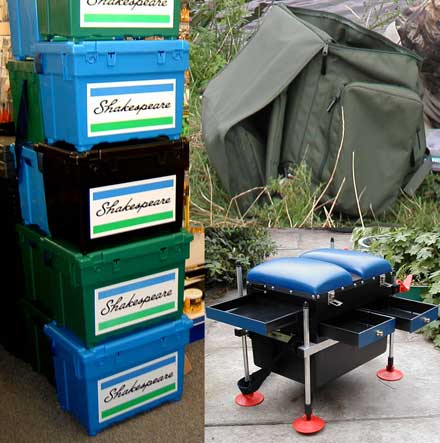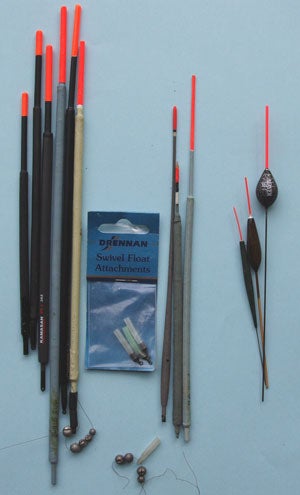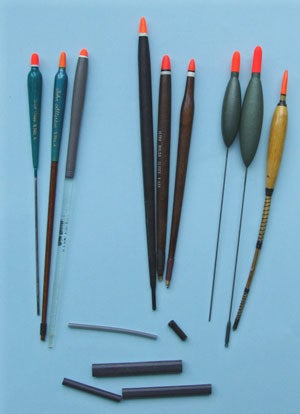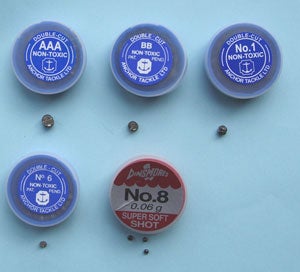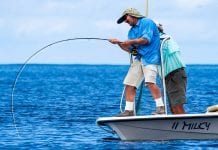| MARK WINTLE | |
|
Beginner’s Essentials 5 – Buying Other Gear 2With coarse fishing covering such a broad spectrum of methods, this short series cannot hope to cover every type of tackle available. The specialist methods such as pole fishing, carp fishing and predator fishing are all well covered elsewhere on the site but as this is about getting beginners started it’s best that we concentrate the basics of float fishing and legering.
Fishing boxes and tackle carriers Whatever type of fishing you do you’ll need some sort of tackle carrier and probably something to sit on. The simplest option for a beginner is a box that you can sit on. Twenty years ago, Shakespeare developed a plastic box (now available in two sizes) that has proved immensely popular and practical. The price is reasonable and build quality is excellent. Because you only get a basic box with strap, you need more boxes to keep the tackle such as hooks, shot, feeders and floats separate; the cheapest way is to get some smaller cheap lunch boxes and use them. To level a box it is possible to bolt on adjustable legs – Octoplus are the main players for this. Specialist pole fishing boxes with separate drawers for rigs are much more expensive and much heavier than the plastic boxes; though ideal for their purpose they are less versatile and you will need easily accessible swims or a trolley to get them to your swim. An alternative to a box is to get a tackle bag or rucksack; if you want to sit down then you need a separate folding chair. Lightweight and cheap roving chairs are certainly more comfortable than sitting on a box and better for legering and carp fishing styles; for active float fishing and pole fishing a box is much more practical.
Vital gear for float fishing A float performs several useful functions. It acts as a bite indicator. It supports the bait at the required depth. It provides (with the shot) casting weight to reach the fishing area. On moving water, it can swim the bait through the area of river being fished – ‘trotting’. Such simple functions and yet such an enormous variety of floats in all shapes and sizes are available. From tiny pole fishing floats to huge floats over a foot long taking massive shot loads it is little wonder the beginner is confused. The secret is to match the float to the conditions. Floats are developed for specific purposes; there is no such thing as a general purpose float. By understanding that some floats are designed for moving water (rivers), some are designed for stillwaters (pools, lakes), some for pole fishing and others for canals; it becomes easier to select the correct floats. Within each sort of float it is possible to get different sizes (shot loads), and by having floats of different sizes it gives you more versatility when fishing. Stillwater floats Stillwater floats at their simplest are simple lengths of peacock quill. Attach them to the line at the bottom end by threading the line through an adapter. Lock the float into place by the main shot load of at least 75% of the total shot load. Therefore, a float marked as having a 4AAA shot load has 3AAA plus 1 BB as the locking shot. Split the remainder of the shot load into tiny no. 8 shot spread at foot intervals down the line. As these floats do nothave an eye at the base, you will need some float adapters. At the other end of the float – the brightly coloured tip, the two main variants are a thick tip – the float is the same diameter throughout – and an insert tip – a slimmer piece of peacock quill is ‘inserted’ into the thicker part. By having a thinner tip the float is more sensitive to bites. The disadvantage is that the float tip may be more difficult to see. For fishing at close range on smaller commercial pools a small selection of insert wagglers taking from 3BB to 3AAA is a good starting point. For bigger and deeper waters, you will need longer floats with greater shot loads up to about 5AAA. As you get more skilled at still water float fishing you may see the need for other floats. >
River floats Whilst stillwater wagglers can be used on slow moving rivers (in the right hands much faster rivers) most river fishing is best tackled using what are broadly described as ‘trotting’ floats. These are floats that are attached both top and bottom using float rubbers – short pieces of silicone rubber tube. As with float adapters this enable you to change floats if necessary. The simplest trotting float, and easiest to buy and use, is a float made of shaped balsa. These come in a wide range of sizes from as small as 3BB to 4 swan shot. The most useful are likely to be around 4BB to 4AAA, so a range of four balsa floats – 4BB, 5Bb, 3AAA and 4AAA would be a good start. For fishing close in and achieving more delicate presentation a stick float, like a small balsa float attached to a long stem, is used. These typically take from 3 no. 4 to about 4BB, and the most useful sizes are 5 no.4 to 7 no. 4. The stem may be a heavy wood, plastic or alloy. The other type of trotting float is an ‘Avon’. These have a bulbous elongated rugby-ball shaped body with a thin tip and thin stem. Originally made with cork for the body and a crow quill for the stem, they have balsa bodies and stems made from a variety of materials – you may be lucky to find ones with crow quill stems. These take anything from 3BB to 5 swan shot but 6BB to 5AAA is the most useful range. Canal and pole fishing floats Canal fishing generally demands delicate floatfishing and therefore tiny waggler floats with very fine tips are an ideal float. Pole fishing entails a variety of tactics but the floats typically have a small neat body, fine tip and thin stem. Attach them by means of a tiny eye on the side of the body and a very fine piece of silicone tube or two on the stem. Shot for float fishing To shot a float up you will need a selection of shot. Shot numbering is based on sizes originally determined by shotgun shot sizes. Anglers use a much-simplified version of the range. For floatfishing, the biggest shot you need is SSG also known as ‘swan’ shot. One of these equates to 2 AAA or 4BB shot which are next two sizes down, and vital sizes for the float angler. Below BB, a number indicates the range with no. 1 being the largest down to no 13 being the smallest. Unless you are pole fishing the range nos. 1, 4, 6 and 8 is a good starting point. For pole and canal fishing you will also need smaller sizes like 10, 11, 12 and 13. No. 10 can be useful for general floatfishing. A plummet, a weight that can quickly be attached to the hook to plumb the depth is useful.
Basic legering gear Legering involves fishing without a float. To gain casting distance attach a weight to the line. These weights come in a variety of shapes and sizes. A popular type is known as an ‘Arlesey bomb’ and is a streamlined pear shape with a swivel embedded in one end. For general legering then weights between When you purchase through links on our site, we may earn an affiliate commission, which supports our community.
|











